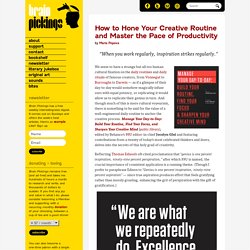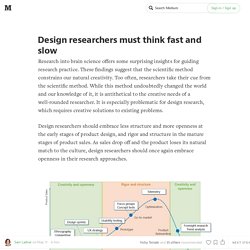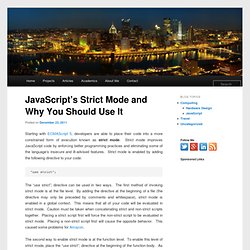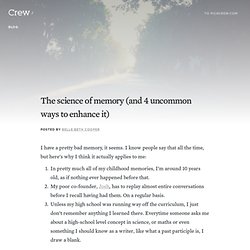

Reading. How to Hone Your Creative Routine and Master the Pace of Productivity. By Maria Popova “When you work regularly, inspiration strikes regularly.”

We seem to have a strange but all too human cultural fixation on the daily routines and daily rituals of famous creators, from Vonnegut to Burroughs to Darwin — as if a glimpse of their day-to-day would somehow magically infuse ours with equal potency, or replicating it would allow us to replicate their genius in turn. And though much of this is mere cultural voyeurism, there is something to be said for the value of a well-engineered daily routine to anchor the creative process.
Manage Your Day-to-Day: Build Your Routine, Find Your Focus, and Sharpen Your Creative Mind (public library), edited by Behance’s 99U editor-in-chief Jocelyn Glei and featuring contributions from a twenty of today’s most celebrated thinkers and doers, delves into the secrets of this holy grail of creativity. It’s time to stop blaming our surroundings and start taking responsibility.
Design researchers must think fast and slow. Generally, we think of research as the focused, systematic collection of data, over time, in keeping with a given framework or theory.

In this view, research is intended to confirm or deny given hypotheses, and incrementally improve our knowledge about a given topic. We know from the book Thinking Fast and Slow, however, that this research approach only serves one type of thinking. Thinking Fast and Slow author Daniel Kahneman tells us that “Type 2” or “slow thinking” is a disciplined, focused, kind of thought that roughly matches the deductive reasoning of the scientific method and other traditional forms of research.
It is structured and deliberate, requiring the cerebral cortex. But Type 1 or “fast thinking” is less structured, more instinctual, and involves the more reptilian parts of the brain. Design research is both thinking fast, and thinking slow. Gifted researchers engage in both thinking fast, and thinking slow. Index of /jemorris/humor. Strict Mode. Starting with ECMAScript 5, developers are able to place their code into a more constrained form of execution known as strict mode.

Strict mode improves JavaScript code by enforcing better programming practices and eliminating some of the language’s insecure and ill-advised features. Strict mode is enabled by adding the following directive to your code: "use strict"; The “use strict”; directive can be used in two ways. The first method of invoking strict mode is at the file level. The second way to enable strict mode is at the function level. Function foo() { "use strict"; // this function is executed in strict mode } function bar() { // this function is executed in non-strict mode } One of the nice things about strict mode is its backward compatibility.
JavaScript has an interesting way of handling variable declarations. Function foo() { var x; var z; x = 1; y = 2; z = x + y; } Notice that only the variables ‘x’ and ‘z’ are declared using the var keyword. Window.y = 2; eval Variables. The most popular quotes on Spoken.ly. Welcome to Noosfeer. Hilarious Pictures Taken At The Perfect Moment. How the Brain Learns—A Super Simple Explanation for eLearning Professionals. How the Brain Learns—A Super Simple Explanation for eLearning Professionals In his book, The Art of Changing the Brain, Dr.

James Zull , notably suggested how David Kolb's famous four-phase model of the learning cycle can be mapped into four major brain processes. He believed that better understanding the learning processes that occurs in the brain encourages a more flexible approach to learning. It does, by extension, help us become better eLearning developers and learners.
After all, it's what's going on in the learners' brains that matters the most. To grasp Zull's suggestion, you have to know first the four stages of Kolb's learning cycle. Concrete Experience: This is when learners encounter a new learning experience Reflective Observation: Learners reflect on the experience Abstract Conceptualization: Think/Study (learn from the experience)Active Experimentation: Applying and trying out what was learned. 10 Lessons I Learned from a Year of Productivity Experiments. The Science of Memory (and 4 Uncommon Ways to Enhance It) I have a pretty bad memory, it seems.

I know people say that all the time, but here’s why I think it actually applies to me: In pretty much all of my childhood memories, I’m around 10 years old, as if nothing ever happened before that.My poor co-founder, Josh, has to replay almost entire conversations before I recall having had them. On a regular basis.Unless my high school was running way off the curriculum, I just don’t remember anything I learned there. Everytime someone asks me about a high-school level concept in science, or maths or even something I should know as a writer, like what a past participle is, I draw a blank. It’s a bit of a struggle having a bad memory. Since I’ve been reading and writing more about the brain, memory is one area that’s really fascinated me, because I’d like to improve mine. How memory works.